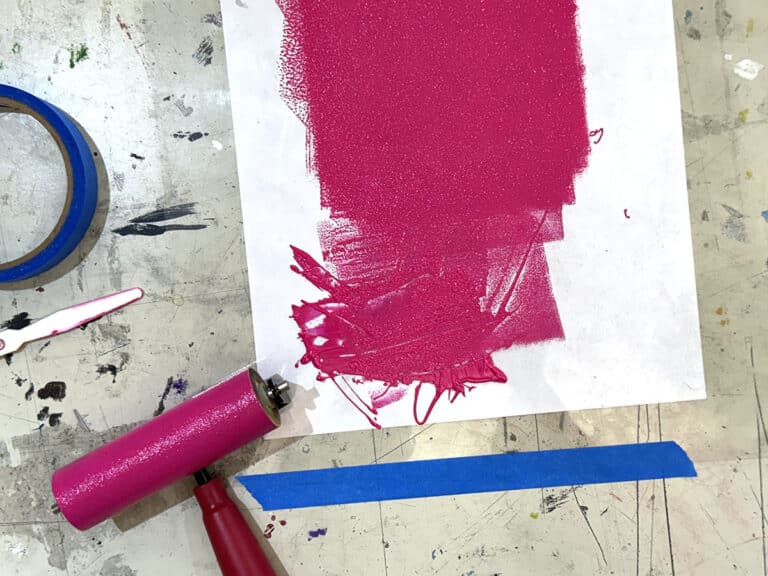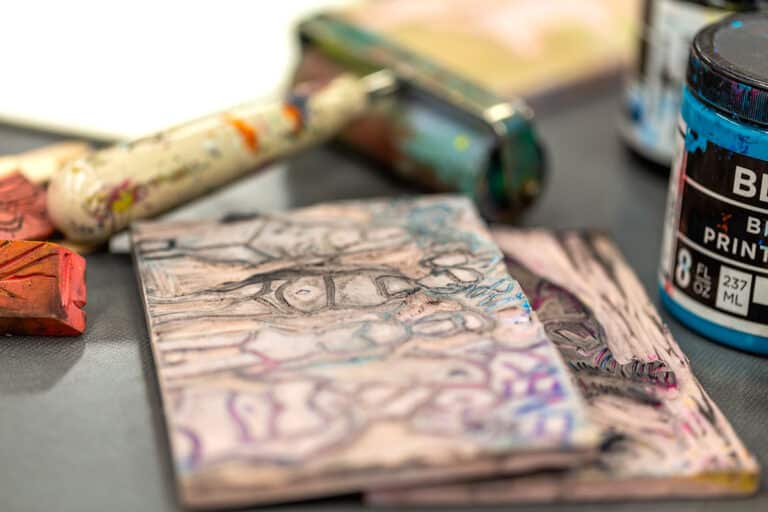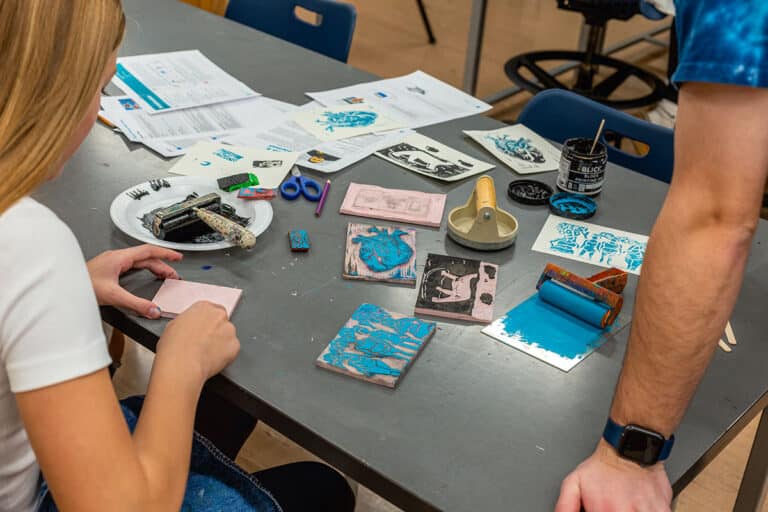I was like a kid in a candy shop when I was able to review some mosaic glass mosaic products from Ed Hoy’s. It was complete with essential tools, choices for the mosaic base, a HUGE variety of glass (which I’m sure concerned the delivery man – shuffling around and all), and even an example lesson plan by Jennifer Kunsch, which helped guide me through my own exploration.
I can only imagine the excitement our art students would feel at the site of all the beautifully colored glass, how we would use it, and all the possible patterns and designs that could be created! Think of all the possibilities, such as mosaics throughout history, symmetry, abstract design, tesselations, AND the Davis Publications Art curriculum even already has lessons with standards about mosaics!
Because orderliness is my way of life, I (of course) sorted the glass into containers based on color. This not only appeased me, but it seems it would be extremely beneficial in our art room settings, not only find colors easier, but a lot safer than digging through a large box of mixed glass for the perfect piece and color.
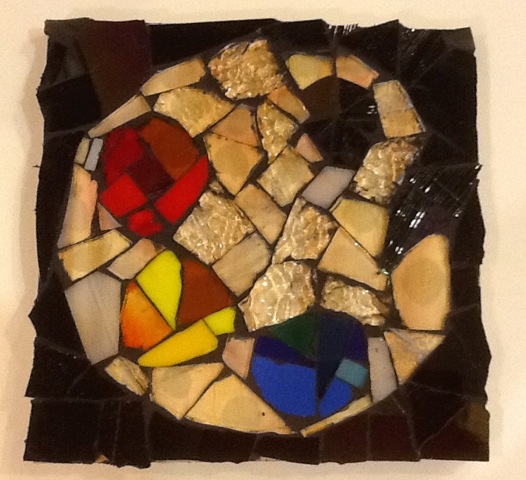
Creating a glass mosaic in the classroom is an excellent vehicle for revisiting and working through the 5 step creative process in art. It is essential for students to plan, begin to create, revise, add finishing touches, and share and reflect throughout the mosaic process. It communicates our enduring goal for every project we do: the necessity of planning, and reiterates the importance of working through the creation process as the driving force throughout the project. As our students would start to create, each piece would be found or cut to fit together like a puzzle in order to complete the image, but revision and problem solving would be necessary, before finishing touches (like glue and grout) could be added. Then as with any project or creative process, reflection and sharing become essential to growth as an artist and furthering the critical thinking process.
Below is my mosaic project done in the iMotion app for iPad (It’s not perfect! But it was a stupendous learning process!):
I was provided some helpful hints by Ed Hoys, and in the process of creating the mosaic, have added my own when considering a mosaic or glass project in my art room. I do encourage you to explore the mosaic creation process yourself (not only is it FUN, but it also helps to be considering your students and unique tips you may need to communicate), OR find a tutorial class on glass cutting and handling basics. I know Glazed Expressions in Des Moines offers a glass studio, in addition to pottery painting and canvas sessions – seeking out a similar business in your area would help break the ice (or glass!) ha!
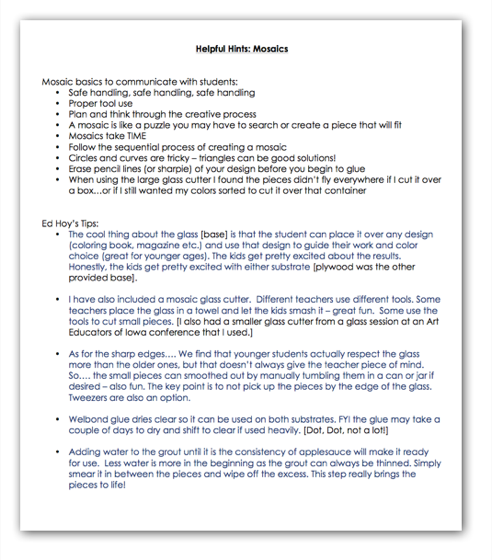
Some Notes on Safety
Safety does concern me as an elementary art teacher, and I feel I would have to choose my upper elementary classes cautiously (5th or 6th), based on their own sense of caution, safety, and responsibility. But I know my kids would rise to the responsibility, in order to create with such novelty materials. Just think of how this involved process would impact them in a positive way that challenges, requires them to flow through the 5 step creative process, and grow as artists both mentally and physically through manipulation of tools and materials many may not have used before. In my mind, that’s what the arts are all about.
Some other quick safety tips –
You can roll the pieces of glass in a coffee can or tumbler to dull the edges for easier pick up. To prevent the glass pieces from getting everywhere during the process, you can have students hold the glass nipper down or break the glass inside a towel or container. Safety glasses are a must!
Have you worked with glass or mosaics in your classroom? What Age Group and Project?
What have you found to be the most safe and efficient practices for using glass in the art room?
Magazine articles and podcasts are opinions of professional education contributors and do not necessarily represent the position of the Art of Education University (AOEU) or its academic offerings. Contributors use terms in the way they are most often talked about in the scope of their educational experiences.

